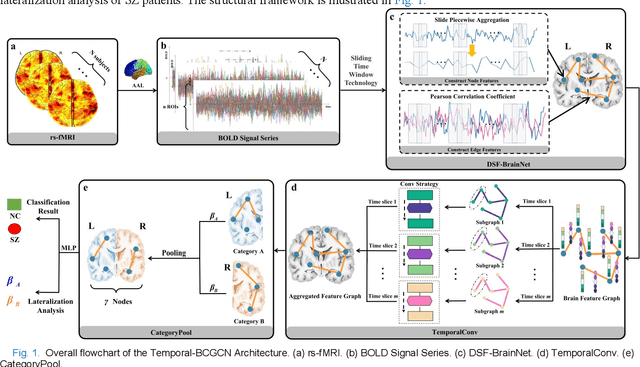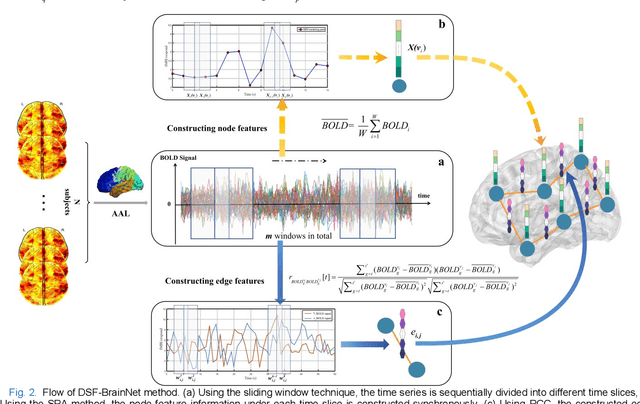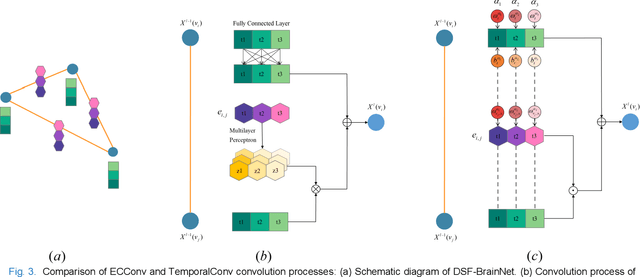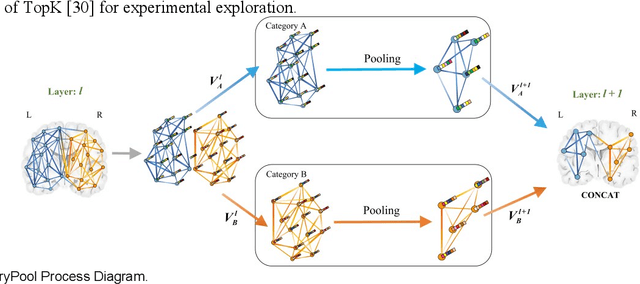Jiaqing Miao
Multi-SIGATnet: A multimodal schizophrenia MRI classification algorithm using sparse interaction mechanisms and graph attention networks
Aug 25, 2024



Abstract:Schizophrenia is a serious psychiatric disorder. Its pathogenesis is not completely clear, making it difficult to treat patients precisely. Because of the complicated non-Euclidean network structure of the human brain, learning critical information from brain networks remains difficult. To effectively capture the topological information of brain neural networks, a novel multimodal graph attention network based on sparse interaction mechanism (Multi-SIGATnet) was proposed for SZ classification was proposed for SZ classification. Firstly, structural and functional information were fused into multimodal data to obtain more comprehensive and abundant features for patients with SZ. Subsequently, a sparse interaction mechanism was proposed to effectively extract salient features and enhance the feature representation capability. By enhancing the strong connections and weakening the weak connections between feature information based on an asymmetric convolutional network, high-order interactive features were captured. Moreover, sparse learning strategies were designed to filter out redundant connections to improve model performance. Finally, local and global features were updated in accordance with the topological features and connection weight constraints of the higher-order brain network, the features being projected to the classification target space for disorder classification. The effectiveness of the model is verified on the Center for Biomedical Research Excellence (COBRE) and University of California Los Angeles (UCLA) datasets, achieving 81.9\% and 75.8\% average accuracy, respectively, 4.6\% and 5.5\% higher than the graph attention network (GAT) method. Experiments showed that the Multi-SIGATnet method exhibited good performance in identifying SZ.
Temporal Dynamic Synchronous Functional Brain Network for Schizophrenia Diagnosis and Lateralization Analysis
Apr 06, 2023



Abstract:The available evidence suggests that dynamic functional connectivity (dFC) can capture time-varying abnormalities in brain activity in resting-state cerebral functional magnetic resonance imaging (rs-fMRI) data and has a natural advantage in uncovering mechanisms of abnormal brain activity in schizophrenia(SZ) patients. Hence, an advanced dynamic brain network analysis model called the temporal brain category graph convolutional network (Temporal-BCGCN) was employed. Firstly, a unique dynamic brain network analysis module, DSF-BrainNet, was designed to construct dynamic synchronization features. Subsequently, a revolutionary graph convolution method, TemporalConv, was proposed, based on the synchronous temporal properties of feature. Finally, the first modular abnormal hemispherical lateralization test tool in deep learning based on rs-fMRI data, named CategoryPool, was proposed. This study was validated on COBRE and UCLA datasets and achieved 83.62% and 89.71% average accuracies, respectively, outperforming the baseline model and other state-of-the-art methods. The ablation results also demonstrate the advantages of TemporalConv over the traditional edge feature graph convolution approach and the improvement of CategoryPool over the classical graph pooling approach. Interestingly, this study showed that the lower order perceptual system and higher order network regions in the left hemisphere are more severely dysfunctional than in the right hemisphere in SZ and reaffirms the importance of the left medial superior frontal gyrus in SZ. Our core code is available at: https://github.com/swfen/Temporal-BCGCN.
 Add to Chrome
Add to Chrome Add to Firefox
Add to Firefox Add to Edge
Add to Edge